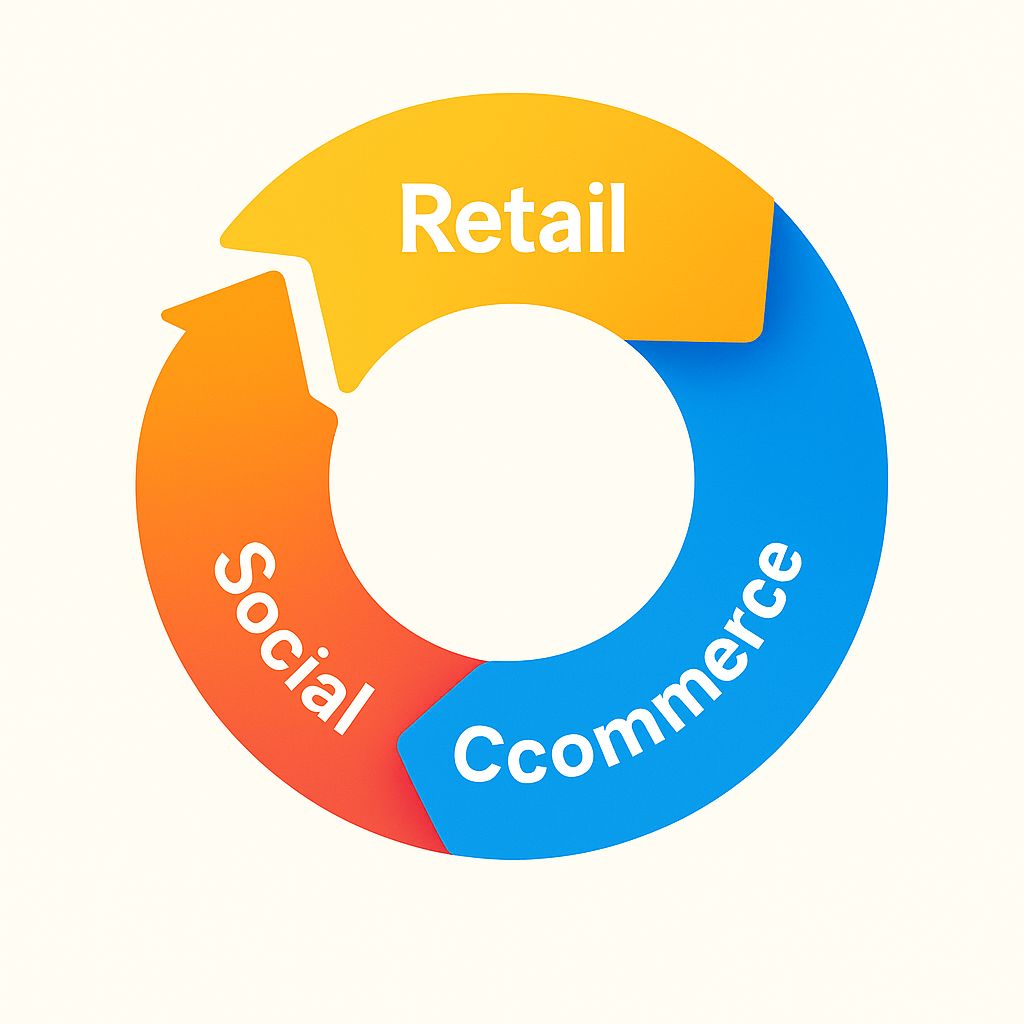- TikTok Shop Playbook
- Posts
- Why Social Commerce is the Ultimate Form of Commerce
Why Social Commerce is the Ultimate Form of Commerce
Over the last decade, we’ve seen commerce evolve in waves:
Retail was about physical presence and shelf space.
E-commerce was about websites, ads, and convenience.
Social commerce is the next—and ultimate—form, because it brings every player into the game.
It’s not just a transaction anymore. It’s an ecosystem. And in this ecosystem, every piece matters.

The Old World: Linear Commerce
Traditionally, commerce flowed in a straight line:
Brand → Customer.
The brand built awareness through ads, retail, or PR. The customer made the purchase. It was simple, predictable, and one-directional.
Even in the e-commerce era, this linear model persisted. Facebook ads or Google search replaced TV and print, but the loop still looked like:
Brand → Ad → Customer.
The brand still controlled the messaging, the distribution, and most of the customer relationship.
Social commerce flipped that model on its head. Suddenly, it wasn’t just brands and customers.
Creators—once considered “influencers”—stepped into the loop. Customers weren’t just buyers; they became advocates, reviewers, and even sellers in their own right.
And marketers? Instead of pushing one-size-fits-all campaigns, they became the orchestrators—aligning the brand, creators, and customers into a cohesive growth engine.
The flow now looks more like a network:
Brand ↔ Creator ↔ Customer ↔ Marketer
It’s no longer linear. It’s interconnected. Every role feeds into the others, and the system scales when all four are aligned.
Breaking Down the Four Pieces
1. Brands (Sellers)
The brand provides the foundation: the product, the supply chain, the positioning. Without a great product, nothing else matters. But in social commerce, brands can’t just be “producers.” They have to think like community builders—empowering creators and customers to take their story and run with it.
The most successful brands don’t just launch products; they launch narratives. Every SKU is an opportunity for someone else to tell the story in their own way.
2. Creators (Affiliates)
Creators are the lifeblood of distribution in social commerce. They make the content, tell the story, and create the demand. Unlike traditional ads, creator-driven content feels authentic because it’s diverse, abundant, and rooted in community.
But creators aren’t just media channels. They’re stakeholders. When structured as affiliates, they have skin in the game. Their incentives are tied directly to sales, which makes them far more effective than traditional “influencers” who simply take a flat fee and move on.
3. Customers
In social commerce, the customer is no longer the end of the chain. They’re part of the loop. Reviews, unboxings, referrals, even TikToks from everyday buyers can become part of the growth engine.
This is where virality happens: when customers themselves start creating content and evangelizing the product. The line between “creator” and “customer” blurs. In many cases, your best affiliates start out as passionate customers.
4. Marketers
The role of the marketer has shifted from broadcasting to orchestrating. Social commerce is a complex game, with many moving parts: affiliate management, content seeding, ad amplification, conversion optimization.
Marketers are the glue that keeps it together. They align the incentives, build systems to scale, and ensure the brand, creators, and customers are moving in the same direction.

The Game Requires Every Piece
Here’s the key insight: no one piece can win the game alone.
A brand without creators has no distribution.
Creators without a great product lose credibility.
Customers without a voice weaken community trust.
Marketers without alignment end up wasting money.
The game only works when every piece is connected. That’s why social commerce is the “ultimate form”—because it integrates all of these roles into one interconnected system.
It’s not enough to just run ads. It’s not enough to just recruit affiliates. It’s not enough to just have a great product. Winning requires all four working in harmony.
Why This Matters Now
TikTok Shop has made this model unavoidable. On the platform, content, commerce, and community are inseparable. A product doesn’t go viral because of a brand campaign—it goes viral because a thousand creators made content, customers stitched and dueted it, and marketers amplified the momentum with the right levers.
This is the new default. And it’s why so many traditional brands struggle to adapt: they’re used to linear thinking. But the winners in social commerce think in networks.
The Takeaway
If commerce used to be chess (two sides, linear moves), social commerce is more like a multiplayer strategy game.
Everyone’s on the board:
Brands setting the rules.
Creators driving the narrative.
Customers fueling the loop.
Marketers orchestrating the system.
To win, you don’t just play your piece. You have to make sure the entire board is working together.
That’s why social commerce isn’t just another channel. It’s the ultimate form of commerce—because it demands that every stakeholder is involved, aligned, and activated.